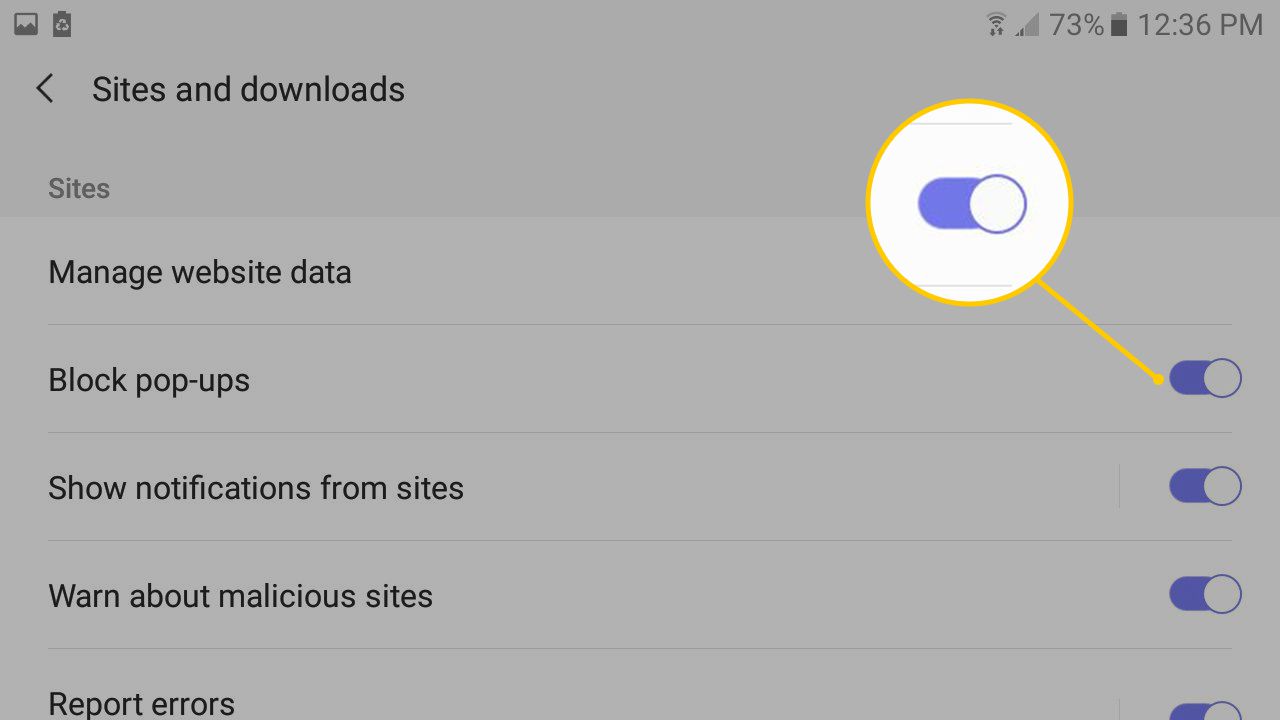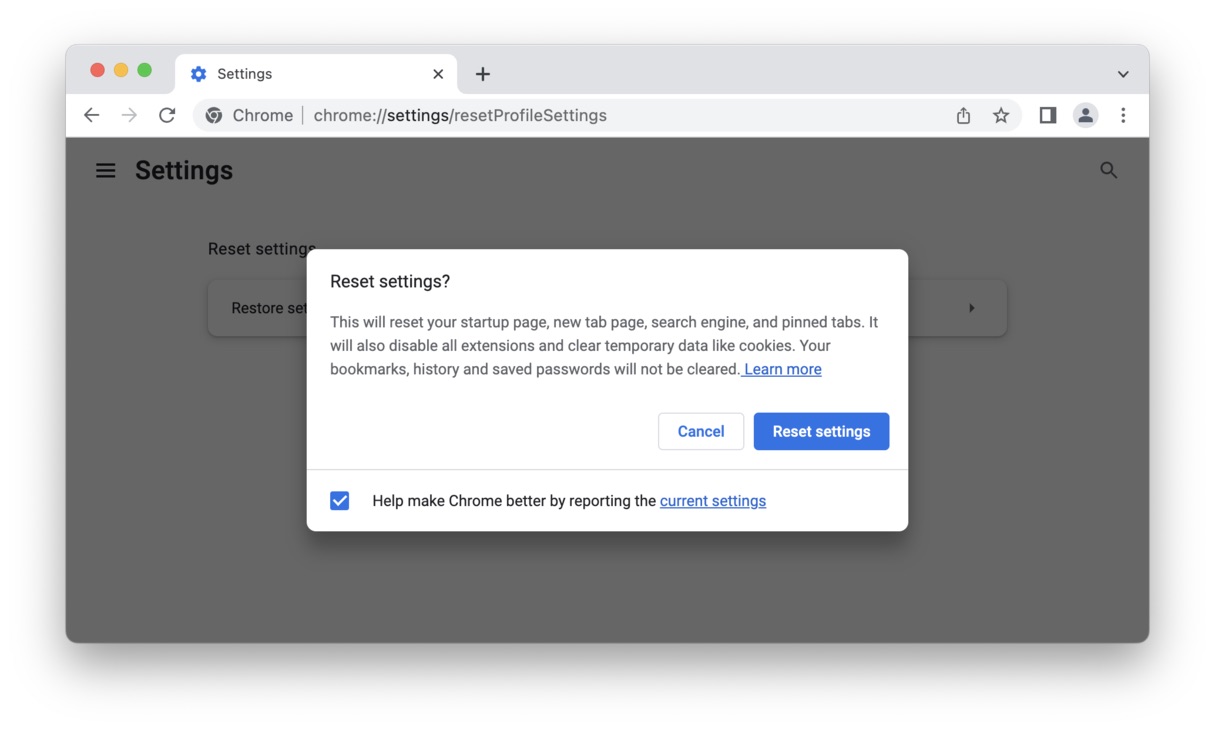Introduction
The Google Chrome search bar is a convenient feature that allows users to perform quick searches directly from the browser's address bar. However, some individuals may find it unnecessary or prefer to use alternative search methods. Whether you're looking to streamline your browsing experience or simply want to explore different search options, there are several methods to consider when aiming to remove the Google Chrome search bar.
In this article, we'll delve into various approaches to help you get rid of the Google Chrome search bar. From disabling the search bar within the browser settings to exploring alternative browsers, we'll cover multiple strategies to cater to different preferences and needs. Additionally, we'll explore the option of removing unwanted extensions and resetting Google Chrome to its default state, providing a comprehensive guide for users seeking to customize their browsing experience.
By understanding and implementing these methods, you can tailor your browsing environment to align with your preferences and optimize your productivity. Whether you're a tech-savvy individual seeking to fine-tune your browser settings or a casual user looking to simplify your browsing experience, the following methods offer practical solutions to address your specific needs.
Let's dive into the step-by-step processes and explore the options available for removing the Google Chrome search bar, empowering you to make informed decisions about your browsing preferences and enhancing your overall online experience.
Method 1: Disabling the Search Bar
Disabling the Google Chrome search bar is a straightforward process that allows users to customize their browsing experience according to their preferences. By following these simple steps, you can effectively remove the search bar from the browser's interface.
-
Accessing Chrome Settings: To begin, open Google Chrome on your computer and click on the three-dot menu icon located in the top-right corner of the browser window. From the dropdown menu, select "Settings" to access the browser's configuration options.
-
Navigating to Search Engine Settings: Within the Settings menu, scroll down and locate the "Search engine" section. Here, you will find the option to manage search engines and the address bar. Click on "Manage search engines" to proceed to the next step.
-
Removing the Default Search Engine: In the "Manage search engines" section, you will see a list of search engines, including the default search engine used by Google Chrome. To disable the search bar, you can remove the default search engine by hovering over it and clicking on the three-dot icon that appears. From the dropdown menu, select "Remove from list" to eliminate the default search engine.
-
Adjusting Address Bar Settings: After removing the default search engine, you can further customize the address bar behavior by clicking on the "Address bar" option located below the list of search engines. Here, you can choose to hide the search bar or modify its behavior according to your preferences.
-
Saving Changes: Once you have adjusted the address bar settings to your satisfaction, be sure to save the changes by clicking on the "Done" button or any relevant option provided within the Settings menu.
By following these steps, you can effectively disable the Google Chrome search bar, allowing you to tailor your browsing experience to better suit your needs and preferences. Whether you prefer a minimalist interface or wish to explore alternative search methods, disabling the search bar provides a simple yet effective solution for customizing your browsing environment.
Method 2: Using a Different Browser
Exploring alternative browsers is a viable approach for individuals seeking to remove the Google Chrome search bar from their browsing experience. While Google Chrome offers a robust set of features and functionalities, some users may prefer to switch to a different browser that aligns more closely with their preferences. By opting for a different browser, users can effectively eliminate the Google Chrome search bar and explore a new interface that caters to their specific needs.
When considering the option of using a different browser, it's essential to explore the diverse range of browsers available across various platforms. From popular choices such as Mozilla Firefox and Microsoft Edge to niche browsers tailored for specific purposes, the browser landscape offers a multitude of options to cater to different user preferences.
Mozilla Firefox, known for its customizable features and privacy-focused approach, presents a compelling alternative for users seeking to transition away from Google Chrome. With a user-friendly interface and a wide range of extensions and add-ons, Firefox provides a versatile platform for browsing while allowing users to customize their search preferences without the presence of a dedicated search bar.
Microsoft Edge, another prominent browser, offers seamless integration with Windows operating systems and a range of productivity-focused features. By transitioning to Microsoft Edge, users can explore a streamlined browsing experience that may align more closely with their preferences, providing an alternative to the Google Chrome search bar within a familiar ecosystem.
Additionally, niche browsers such as Brave and Opera present unique alternatives for users looking to remove the Google Chrome search bar and explore innovative browsing experiences. These browsers often emphasize privacy, security, and performance, catering to specific user needs and offering distinct interfaces that may resonate with individuals seeking a change from their current browsing environment.
By considering the diverse range of browsers available, users can explore alternative options that align with their preferences and effectively remove the Google Chrome search bar from their browsing experience. Whether prioritizing privacy, customization, or performance, the option of using a different browser presents a compelling solution for individuals seeking to tailor their browsing environment to better suit their needs and preferences.
Method 3: Removing Unwanted Extensions
Removing unwanted extensions from Google Chrome is an effective method for streamlining your browsing experience and potentially eliminating the Google Chrome search bar. Extensions, also known as add-ons or plugins, are additional software components that enhance the functionality of the browser by providing features such as ad-blocking, password management, and productivity tools. However, an accumulation of unnecessary or outdated extensions can clutter the browser interface and impact its performance. By removing unwanted extensions, users can optimize their browsing environment and potentially address the presence of the Google Chrome search bar.
To remove unwanted extensions from Google Chrome, follow these steps:
-
Accessing the Extensions Menu: Start by opening Google Chrome on your computer and clicking on the three-dot menu icon in the top-right corner of the browser window. From the dropdown menu, navigate to "More tools" and select "Extensions" to access the extensions management interface.
-
Reviewing Installed Extensions: Within the Extensions menu, you will find a list of all installed extensions, each accompanied by a brief description of its functionality. Take the time to review the list and identify any extensions that you no longer require or that may be contributing to a cluttered browsing experience.
-
Removing Unwanted Extensions: To remove an unwanted extension, locate the specific extension in the list and click on the "Remove" button or the trash can icon associated with the extension. Confirm the removal when prompted to effectively uninstall the extension from Google Chrome.
-
Disabling Unnecessary Extensions: In addition to removing unwanted extensions, you may also choose to disable certain extensions that you do not frequently use but wish to retain for future use. By disabling an extension, you can temporarily deactivate its functionality without completely uninstalling it from the browser.
-
Restarting Google Chrome: After removing or disabling unwanted extensions, consider restarting Google Chrome to ensure that the changes take effect. This step can help refresh the browser and optimize its performance following the removal of unnecessary extensions.
By systematically removing unwanted extensions from Google Chrome, users can declutter their browsing environment, potentially eliminating the Google Chrome search bar, and optimizing the browser's performance. This method allows for a tailored browsing experience, ensuring that only essential and relevant extensions remain active, contributing to a more streamlined and efficient browsing experience.
Method 4: Resetting Google Chrome
Resetting Google Chrome to its default settings can serve as a comprehensive solution for addressing various issues within the browser, including the presence of the Google Chrome search bar. By initiating a reset, users can restore the browser to its original state, effectively removing any customizations, extensions, and settings that may be contributing to an undesirable browsing experience.
To reset Google Chrome, follow these steps:
-
Accessing Chrome Settings: Open Google Chrome on your computer and click on the three-dot menu icon located in the top-right corner of the browser window. From the dropdown menu, select "Settings" to access the browser's configuration options.
-
Navigating to Advanced Settings: Within the Settings menu, scroll down and click on the "Advanced" option to reveal additional configuration settings for Google Chrome.
-
Resetting Browser Settings: Under the "Reset and clean up" section, click on "Restore settings to their original defaults." This action will prompt a confirmation dialogue, allowing you to review the changes that will occur as a result of the reset.
-
Confirming the Reset: After reviewing the implications of the reset, click on the "Reset settings" button to initiate the process. Google Chrome will proceed to reset to its default state, removing any customizations, extensions, and settings that may have contributed to the presence of the Google Chrome search bar.
-
Restarting Google Chrome: Following the reset, consider restarting Google Chrome to ensure that the changes take effect. This step can help refresh the browser and provide a clean slate for users to customize their browsing experience according to their preferences.
By resetting Google Chrome, users can effectively address the presence of the Google Chrome search bar and other potential issues within the browser. This method offers a comprehensive approach to restoring the browser to its default state, providing a fresh start for users to customize their browsing environment and optimize their overall online experience.
Whether seeking to eliminate the search bar, address performance issues, or streamline the browser's interface, resetting Google Chrome presents a practical solution for users looking to rejuvenate their browsing experience and tailor it to their specific preferences.
Conclusion
In conclusion, the Google Chrome search bar can be effectively removed through a variety of methods, offering users the flexibility to customize their browsing experience according to their preferences. By exploring the step-by-step processes outlined in this article, individuals can gain valuable insights into the options available for eliminating the search bar and optimizing their overall online experience.
From the straightforward approach of disabling the search bar within the browser settings to the exploration of alternative browsers, users have the opportunity to tailor their browsing environment to better suit their needs and preferences. Additionally, the removal of unwanted extensions and the comprehensive reset of Google Chrome provide practical solutions for addressing the presence of the search bar and streamlining the browser's interface.
By understanding and implementing these methods, users can take control of their browsing experience, fostering a more personalized and efficient approach to accessing online content. Whether prioritizing a minimalist interface, exploring alternative search methods, or rejuvenating the browser's performance, the options presented in this article empower users to make informed decisions about their browsing preferences.
Furthermore, the ability to remove the Google Chrome search bar reflects the adaptability and customization options inherent in modern web browsers. As users continue to seek personalized and tailored experiences across various digital platforms, the flexibility to modify browser settings and features becomes increasingly valuable. By leveraging the methods outlined in this article, individuals can align their browsing environment with their specific needs, ultimately enhancing their productivity and satisfaction while navigating the digital landscape.
In essence, the process of removing the Google Chrome search bar transcends mere customization; it embodies the empowerment of users to curate their online experiences in a manner that resonates with their individual preferences. As technology continues to evolve, the ability to personalize and optimize digital tools such as web browsers becomes integral to fostering a seamless and enjoyable online journey.
By embracing the diverse methods for removing the Google Chrome search bar, users can embark on a journey of exploration, customization, and empowerment within their digital realms, ultimately shaping their browsing experiences to align with their unique preferences and priorities.

























